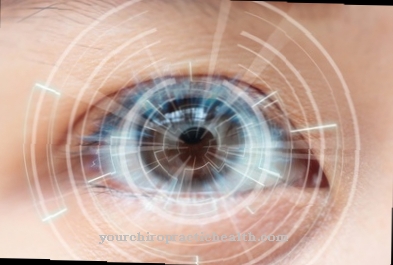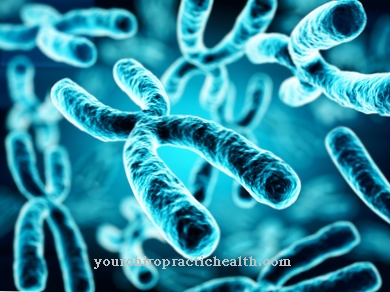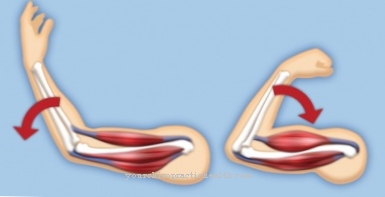The Piloerection(or goose bumps) is the response of the sympathetic nervous system in which small groups of muscles contract. It is a reflex that has developed in the history of mammals and humans.
What is the pilo erection?
.jpg)
The piloerection is a reflex that originally served to regulate the body's heat. If goose bumps form, the hair follicles of the top layer of skin are pulled outwards and the hair protrudes. Goosebumps also appear suddenly when we are aroused, fearful or stressed.
Goose bumps are most noticeable on the forearms. However, we get them all over the body and only notice them primarily in the extremities. It can also be seen on the legs, neck, chest, neck and buttocks.
Music often creates goosebumps because we are emotionally addressed. Melodies set many reactions in motion in the brain, because the once heat-insulating reflex could also be carried over to acoustics in the course of development.
Several theories try to justify the development of goosebumps. For many scientists, the physiological phenomenon goes back to primal instincts and was once used to ward off hostile threats.
Our current, weak hair is a genetic remnant of the primeval fur. It had many functions. It served as protection against cold and threats. If the hair was straight, a cushion of air could form in the gaps, which acted like an insulating layer.
Today the goose bumps no longer offer us any real protection, because the hair is only sparse. However, the response is still there. The intensity of goosebumps can be measured precisely thanks to electrical impulses.
Function & task
When we get goose bumps, our hair stands up without warning. This usually happens when it's cold, intense feelings and illnesses. There are several theories about giving up goosebumps, all of which are controversial. The most likely assumption is that goose bumps are a holdover from the fur of our ancestors. It is not clear why emotional moments in particular trigger goose bumps.
Theories sound conclusive, but cannot answer all questions. Goosebumps when excited, for example, do not occur with all elementary emotions. Some scientists suggest that the piloerection is a response to frequencies or sequences of tones from baby animals looking for their mother.
In the modern world, goosebumps is an instinctive response with no particular purpose, it seems. We get goose bumps when we are scared or when we hear our favorite music. The hair stands up and, to put it exaggeratedly, the skin looks like a plucked goose.
Each hair on the skin is surrounded by a hair follicle that looks like a tiny mound. The hair follicle and follicle form a triangle shape. There are very small muscles on each hair follicle. When these muscles contract, goose bumps occur.
An air cushion is created between the straightened hair and the skin. The upholstery can store body heat better and improves blood flow to the epidermis. Contracting the skin also reduces heat loss. So once this body function served for survival.
The fact that goosebumps develop when we are very afraid is interpreted by some researchers as an act of showing off to the enemy. Possibly the creeps were a deterrent mechanism. When our ancestors saw themselves threatened, their hair stood up and they got goose bumps. The fluffed fur made them look more dangerous than they actually were. A mechanism similar to that of courtship behavior in the animal world could also be behind this. With erect fur, primitive man looked more magnificent and could impress more strongly.
You can find your medication here
➔ Medicines for cold feet and handsIllnesses & ailments
Skin and psyche are closely related. This strong connection can be seen in small reactions. The autonomic nervous system supplies all organs and tissues and is part of the entire nervous system. It influences affects and feelings and controls sadness, joy, anger, aggression and arousal. The vegetative affects resulting from this include goose bumps as well as palpitations, increase in blood pressure, pale, blushing and an increase in breathing frequency.
Goosebumps aren't just responsible for feeling positive. It occurs with colds, shows itself with fever and chills. The skin can also make psychological conflicts visible, because the nerve endings reach into the top layer of the skin.
Stress is often reflected directly on the skin. Stress causes itching, redness, hives, or eczema. Stress sets an entire editorial chain in motion and there is an intense interplay between the immune system, psyche, nerves and hormonal system.
As a result of the high release of stress hormones, the immune system weakens and inflammatory reactions occur. Many diseases such as neurodermatitis, warts or hair loss can be explained by inflammatory reactions.
Skin diseases bring the soul out of balance. This is noticeable in psoriasis, the most common side effect of which is depression. Psoriasis often leads into a vicious circle, because those affected feel disfigured and sometimes even disgusted with their own bodies - which is often due to the fact that such a skin complexion is socially unattractive.As a result, the stress response intensifies and the stress leads to new flare-ups. This can result in those affected withdrawing completely and becoming lonely. According to the latest studies, chronic skin diseases limit the quality of life to the same extent as heart disease, diabetes or cancer.












.jpg)



.jpg)










.jpg)
